 |
Picks is a monthly sampling of Japan's art scene, offering short reviews of exhibitions at museums and galleries in recent weeks, with an emphasis on contemporary art by young artists. |
 |
 |
|
|
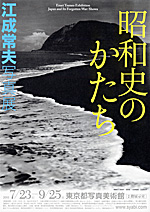 |
 |
|
| Enari Tsuneo Exhibition -- Japan and Its Forgotten War: Showa |
| 23 July - 25 September 2011 |
Tokyo Metropolitan Museum of Photography
(Tokyo) |
 |
| Since 1974, Enari has used his camera to expose the scars of war in Asia and the Pacific and to critically examine the state of postwar Japan's collective psyche, particularly in regard to its past misdeeds. This exhibition is, on the one hand, an orthodox documentary presentation, but on the other, a boldly designed series of images -- alternately color-saturated and monochrome -- printed on large rolls of glossy photosensitive paper for maximum impact. Both visually and in its content, it is an intense experience. |
|
|
 |
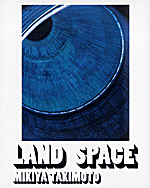 |
 |
|
| Mikiya Takimoto: LAND SPACE |
| 16 July - 28 August 2011 |
MA2 Gallery
(Tokyo) |
 |
| This fascinating show is the quintessence of every schoolboy's dream of space flight. Photographer Takimoto shot these close-ups of the Space Shuttle at Florida's Kennedy Space Center over the course of five trips he has made there since 2009. Tresspassing is prohibited within a five-kilometer radius, so Takimoto devised a remote-control apparatus that allowed him to set his camera only 500 meters away from the launch pad and press the shutter in response to the noise of the rockets, taking photos continuously during liftoff. With the Space Shuttle now in mothballs, this series is one sort of monument in its memory. |
|
|
|
|

|
 |
 |
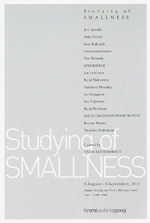 |
 |
| Studying of SMALLNESS |
| 6 August - 6 September 2011 |
hiromiyoshii roppongi
(Tokyo) |
 |
| Curated by Team Roundabout, this show introduces projects designed by 15 teams of young architects in the wake of the March 11 disaster. The models arranged on pedestals around the floor are indeed petite, one might even say cute. But the concepts are intriguing -- notably the building addition extending from a broken aperture by the team MatsuokaSatoshiTamuraYuki, and Koji Kakiuchi's small structures surrounded by flower beds. |
|
|
 |
 |
 |
| sweet memory: even for fairy tale princes |
| 20 July - 11 September 2011 |
|
Kyoto Art Center
(Kyoto) |
 |
| As anticipated, all four artists in this group show -- Chelin, Koshi Kawachi, Tomoko Hayashi and Yuko Uryu -- approached the theme of sweet edibles from an everyday perspective, and most of the works were quite lovely in their depiction of the fleeting pleasures of the sweet tooth. Chelin and Hayashi, however, went the extra mile by exploring the primal force that is pleasure itself, with intriguing results. |
|
|
|
|
|
|
|

|
 |
 |
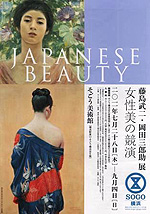 |
 |
| Takeji Fujishima and Saburosuke Okada: Japanese Beauty |
| 28 July - 4 September 2011 |
Sogo Museum
(Kanagawa) |
 |
| Both Fujishima (1867-1943) and Okada (1869-1939) were born in Kyushu right around the time of the Meiji Restoration, and both studied with Sachihiko Soyama and went on to teach at the Tokyo School of Fine Arts. As this show attests, the similarities don't end there, as both artists are also known for their pursuit of feminine beauty through portrait painting. Once past their early periods, however, they evince quite disparate styles. In a nutshell, one might call Fujishima a modernist and Okada a classicist.
|
|
|
 |
 |
| Shinya Ishida: Wonderful Trash |
| 19 - 29 August 2011 |
INAX Gallery Tokyo
(Tokyo) |
 |
| For some years now Ishida has been constructing his art from the detritus of daily life: plastic containers, empty bottles and cans, broken toys, roadside trash. There is nothing new about "trash art," but Ishida's creations are truly sublime in their symmetry, rhythm and balance. His compositional genius appears to stem not from intellectual principles of any sort, but from instinctive sensory responses that arise naturally from such fundamental life processes as walking, eating and touching. |
|

|
 |
 |
 |
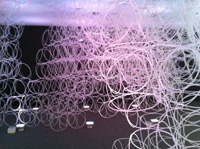 |
|
| Jun Aoki: Boyoyong |
| 26 July - 12 August 2011 |
Okamura Garden Court Showroom
(Tokyo) |
 |
| The exhibition space was filled with rings -- some 8,000 of them, made of polypropylene and linked to form a gargantuan, fluffy, shapeless cloud: the onomatopoetic boyoyong of the title. Indeed, when a visitor touched the mass, it quivered and sounded just like that: boyoyong! The installation, by maverick architect Aoki and the creative unit Mongoose Studio, occupied the Hotel New Otani showroom of office interior designer Okamura Corporation. |
|
|
 |
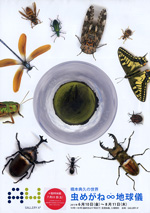 |
 |
| Norihisa Hashimoto's World: Insect Glasses and the Globe |
| 10 June - 11 August 2011 |
Gallery A4
(Tokyo) |
 |
| Best known for his panorama ball photography, Hashimoto produces very hi-tech media art, but it is not typical of the genre's slavish devotion to technology. What makes Hashimoto's output different is a primordial desire to "see" that pervades his work. In his huge, super-high-res color prints of insects, one detects a young boy's obsessive fascination with bugs. His panorama ball creations (photos projected onto a sphere), on the other hand, suggest a frustration with the standard practice of distorting the objects one sees to fit the confines of a flat, rectangular frame. |
|
|
|
|
|
|
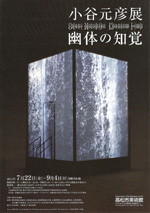 |
 |
| Motohiko Odani: Phantom Limb |
| 22 July - 4 September 2011 |
Takamatsu City Museum of Art
(Kagawa) |
 |
| This traveling exhibition offers a comprehensive distillation, devoid of dross, of multimedia artist Odani's entire oeuvre to date. The works are displayed in more or less chronological order, and one can detect a shift at some point from his early fascination with the grotesque to a more recent desire to express something transcendent. Throughout his career, however, Odani demonstrates a passion for perfection, admitting of no compromise in the smallest details. That is an admirable trait whatever you may think of the final product. |
|
 |
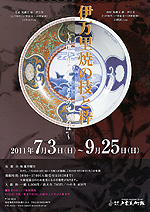 |
 |
| The artistry and elegance of Imari ware |
| 3 July - 25 September 2011 |
Toguri Museum of Art
(Tokyo) |
 |
| Subtitled "Learning the rudiments of ceramics through Ko-Imari ware," this show offers a beginner's course in the history and techniques of Ko-Imari, the first porcelain produced in Japan. Developed in northern Kyushu in the early 1600s, Imari ware enjoyed popularity with Japan's nobility for the next two centuries. This thorough presentation explains everything from the difference between earthenware and porcelain to the evolution of firing techniques, shapes and colors. It's edifying to learn that Imari was a major industry involving numerous artisans and kilns, with production and designs adapting to the fluctuating demands of the market. |
|
|
|
|
 |
|